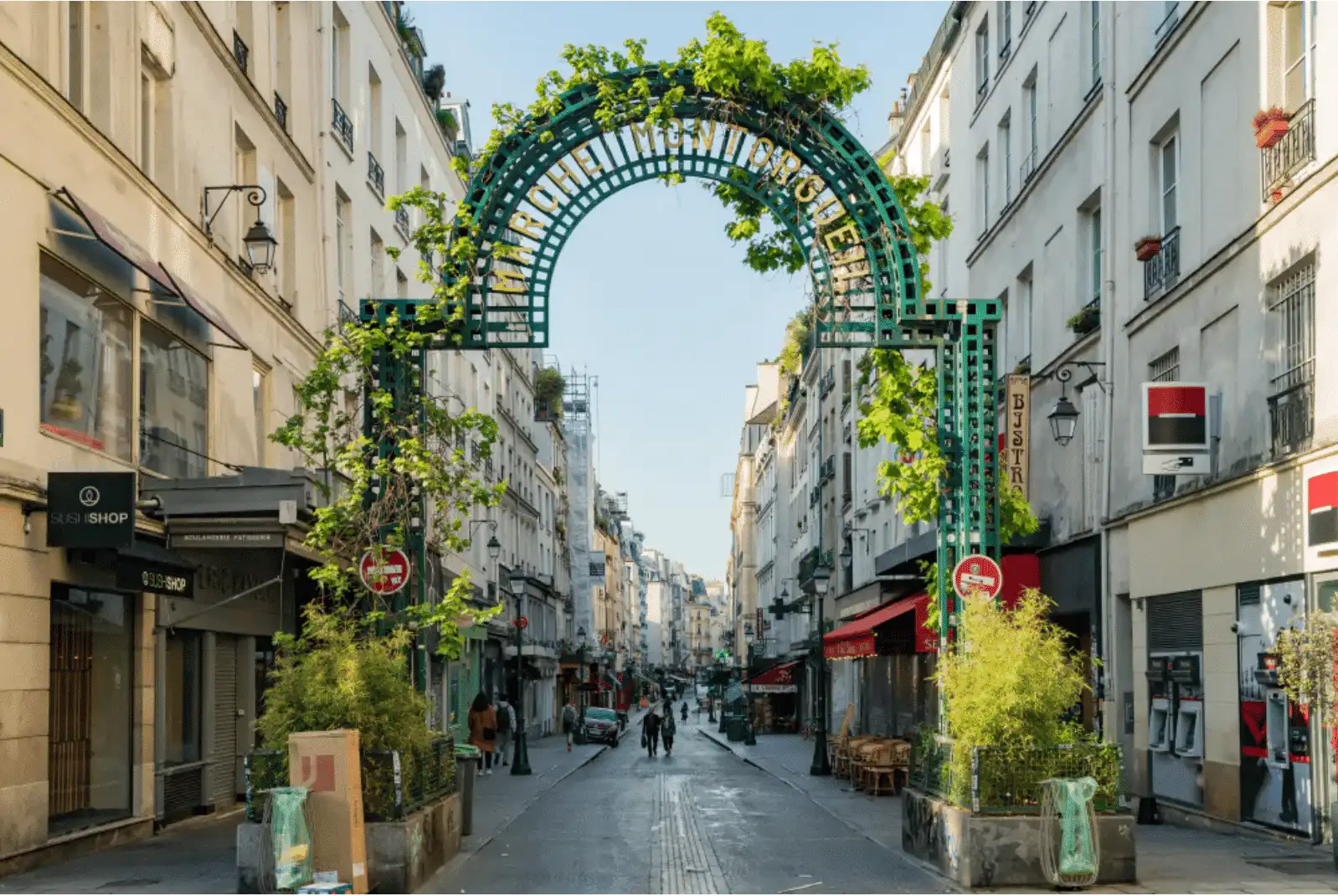
Rue Montorgueil contains a thousand and one treasures, between history and unusual facts. It is one of the oldest, liveliest and most beautiful streets in Paris.
A VERY OLD STREET
Straddling the first and second arrondissements of Paris, rue Montorgueil is one of the oldest streets in the capital. It is estimated that its creation dates back to the Middle Ages, before the 13th century. As for its name, it is rather difficult to assign an origin, since it has never really changed since that time. The consensus believes that it comes from Mont Orgueil (Vicus Montis Superbi), a hillock close to the route. But, think again if you think that this mound is of natural origin, because it was neither more nor less than a pile of rubbish between the 10th and 15th centuries! The Parisians had therefore given it the name of Mont Orgueilleux, then Mont Orgueil , ironically .
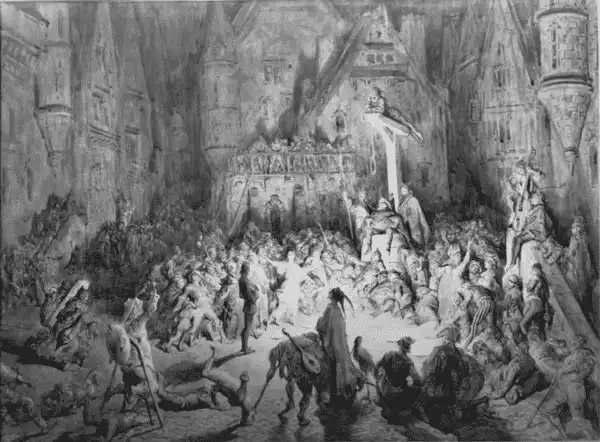
The Court of Miracles by Gustave Doré, illustration of the romantic-medieval vision depicted in Notre-Dame de Paris by Victor Hugo.
Rue Montorgueil has always been a very lively place of passage: from the middle of the 17th century onwards, it welcomed fishermen from the north of France, who came to bring their cargo through the Porte Poissonnière. Constantly bustling, noisy but also dirty and muddy, rue Montorgueil was located near the Great Court of Miracles, which made it a place where it was not safe to walk late at night…
HISTORICAL PLACES
THE STOHRER PASTRY SHOP
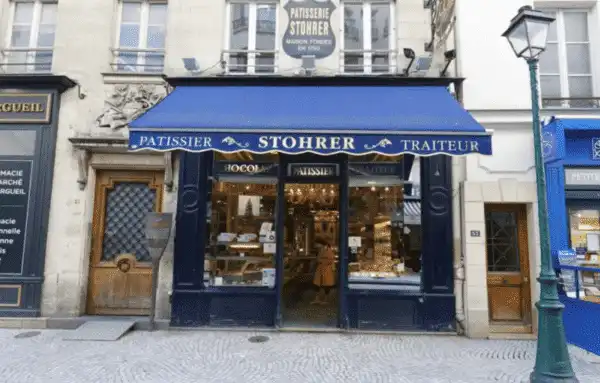
Due to its age, rue Montorgueil has hosted many events and historical sites. The most famous of these is undoubtedly the famous Pâtisserie Stohrer. Founded in the 18th century , it is the oldest pastry shop in Paris. In 1725, Princess Marie Leszczynska, daughter of King Stanislas I of Poland, arrived in Paris to marry King Louis XV. Moving to Paris, she took her father’s pastry chef, Nicolas Strohrer. The latter settled in 1730 on the rue Montorgueil to open his pastry shop where he sold his specialties, introducing Polish pastries to the French population.
There he invented the baba rum, derived from a Polish pastry. Legend has it that King Stanislas I, tasting this delicious pastry, decided to give it the name Ali-Baba, in reference to the tale of the Thousand and One Nights that he was reading.
L’ ESCARGOT DE MONTORGUEIL
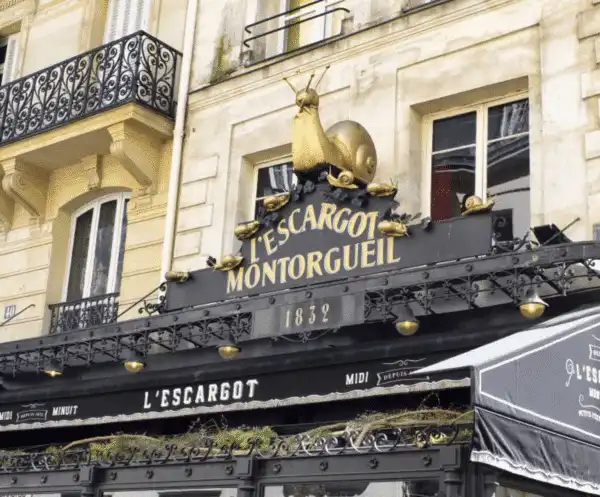
It is without a doubt the most original sign on the street! L’Escargot de Montorgueil opened in 1832 to specialize in Burgundian cuisine and snail dishes. Having preserved its superb sign in the shape of a large golden snail, this restaurant also contains a magnificent decoration: its ceiling by Georges Clairin, adorned the living room of the divine Sarah Bernhardt.
In almost 200 years, the Escargot de Montorgueil has seen the most prestigious names in Paris: Marcel Proust, Pablo Picasso, Charlie Chaplin and of course, Sarah Bernhardt.
AU ROCHER DE CANCALE
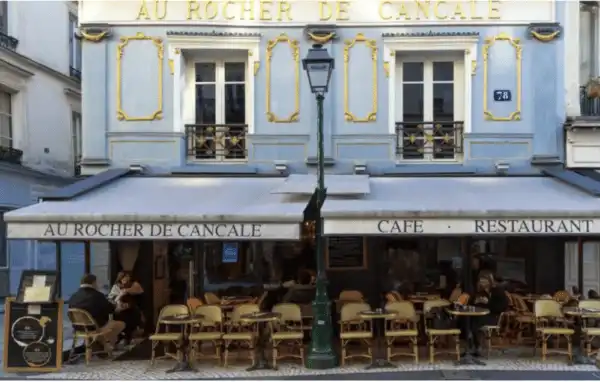
The restaurant Au Rocher de Cancale is one of those establishments whose magnificent frontage is immediately noticeable. Specializing in oysters, the Rocher de Cancale opened in 1804. It was notably made famous by Honoré de Balzac in his famous Comédie Humaine. Indeed, the restaurant is mentioned there many times because it is a meeting place between its different characters.
Au Rocher de Cancale remained a reference in the gastronomy of the district and welcomed personalities like Alexandre Dumas and Théophile Gautier. It began to decline in the face of competition from other cafés on the street and was forced to close its doors in 1846. It then reopened on rue Richelieu before returning to its location on rue Montorgueil .
THE ARREST OF JEAN DIOT AND BRUNO LENOIR
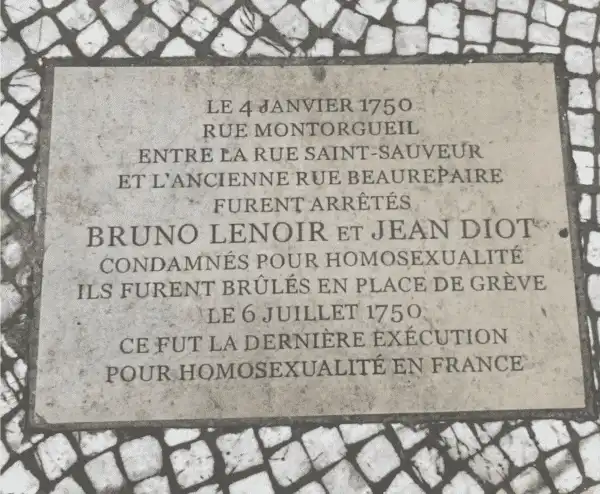
If you are one of those people who walk down the street with your head down, you may have already noticed this plaque , located at the intersection between rue Montorgueil and rue Bachaumont. It testifies to a historical event that sends shivers down your spine: on January 4, 1750, two men named Jean Diot and Bruno Lenoir, aged 40 and 21, were surprised: “ in an indecent posture and in a reprehensible manner. »
The two men were quickly tried and condemned to die at the stake the following July 6. Today erected as LGBT martyrs, Jean Diot and Bruno Lenoir are the last people executed in France for homosexuality.
A STREET CELEBRATED IN THE ARTS

Balzac mentioned rue Montorgueil many times in his Comédie Humaine. But he is not the only one. In Les Misérables, Victor Hugo also mentioned the street. He even gave a new etymology for it, arguing that the street owes its name to the “pride” (old name for jack), often used in this street. Still in literature, Emile Zola quotes in Le Ventre de Paris the inn “Le Compas d’Or “, the entrance to which has now disappeared.
On the painting side, fans of Impressionism are certainly familiar with Claude Monet’s painting, soberly titled “La Rue Montorgueil ” painted in 1878. This canvas shows the street filled with people and adorned with thousands of flags, at the national holiday occasion.
Monet will say about this painting: “I liked flags. The first national holiday of June 30, I was walking rue Montorgueil with my work tools; the street was very pavoise with a crazy world. I notice a balcony, I go up and ask permission to paint, it is granted to me. Then I go back down incognito! »
Original article by, Virginie Paillard posted on pariszigzag.fr
Contact Paris Property Group to learn more about buying or selling property in Paris.


Social Cookies
Social Cookies are used to enable you to share pages and content you find interesting throughout the website through third-party social networking or other websites (including, potentially for advertising purposes related to social networking).